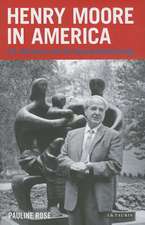How Writing Came About
Autor Denise Schmandt-Besseraten Limba Engleză Paperback – feb 1997
In 1992, the University of Texas Press published Before Writing, Volume I: From Counting to Cuneiform and Before Writing, Volume II: A Catalog of Near Eastern Tokens. In these two volumes, Denise Schmandt-Besserat set forth her groundbreaking theory that the cuneiform script invented in the Near East in the late fourth millennium B.C.—the world's oldest known system of writing—derived from an archaic counting device.
How Writing Came About draws material from both volumes to present Schmandt-Besserat's theory for a wide public and classroom audience. Based on the analysis and interpretation of a selection of 8,000 tokens or counters from 116 sites in Iran, Iraq, the Levant, and Turkey, it documents the immediate precursor of the cuneiform script.
Preț: 168.05 lei
Nou
Puncte Express: 252
Preț estimativ în valută:
32.17€ • 34.95$ • 27.04£
32.17€ • 34.95$ • 27.04£
Carte disponibilă
Livrare economică 31 martie-14 aprilie
Livrare express 14-20 martie pentru 58.16 lei
Preluare comenzi: 021 569.72.76
Specificații
ISBN-13: 9780292777040
ISBN-10: 0292777043
Pagini: 207
Ilustrații: 27 b&w, 18 Ld, 3 Maps, 5 Tables, 42 Pages Of Charts
Dimensiuni: 178 x 254 x 13 mm
Greutate: 0.36 kg
Ediția:Prescurtată
Editura: University of Texas Press
Colecția University of Texas Press
ISBN-10: 0292777043
Pagini: 207
Ilustrații: 27 b&w, 18 Ld, 3 Maps, 5 Tables, 42 Pages Of Charts
Dimensiuni: 178 x 254 x 13 mm
Greutate: 0.36 kg
Ediția:Prescurtată
Editura: University of Texas Press
Colecția University of Texas Press
Notă biografică
Denise Schmandt-Besserat is Professor of Middle Eastern Studies at the University of Texas at Austin.
Cuprins
- Preface
- Introduction: Tokens, a New Theory
- The Myths
- The Pictographic Theory
- Tokens
- Part One: The Evidence
- 1. What Are Tokens?
- Types and Subtypes
- Evolution from Plain to Complex Materials
- Manufacture
- The Token Collection under Study
- 2. Where Tokens Were Handled and Who Used Them
- Types of Settlements
- Distribution within Settlements
- Structures
- Token Clusters
- Containers Holding Tokens
- Associated Assemblages
- Tokens as Funerary Offerings
- 3.Strings of Tokens and Envelopes
- Strings of Tokens
- Envelopes
- 4. Impressed Tablets
- Number
- Context
- Chronology
- Description
- The Signs
- Beyond the Impressed Tablets: Pictography
- The Meaning of Signs and Their Corresponding Tokens
- The Place of Impressed Tablets in the Evolution of Writing
- 1. What Are Tokens?
- Part Two: The Interpretation
- 5. The Evolution of Symbols in Prehistory
- Symbols and Signs
- Lower and Middle Paleolithic Symbols
- Upper Paleolithic and Mesolithic Symbols
- Neolithic Symbols
- A Turning Point in Communication and Data Storage
- 6. Tokens: The Socioeconomic Implications
- Reckoning Technology and Economy
- Reckoning Technology and Social Organization
- 7. Counting and the Emergence of Writing
- The Various Modes of Counting
- The Sumerian Philological Evidence
- The Near Eastern Archaeological Data
- 8. Conclusions: Tokens, Their Role in Prehistory and Their Contribution to Archaeology
- Economy
- Political Structure
- Mathematics
- Communication
- 5. The Evolution of Symbols in Prehistory
- Part Three: The Artifacts
- Cones
- Spheres
- Disks
- Cylinders
- Tetrahedrons
- Ovoids
- Quadrangles
- Triangles
- Biconoids
- Paraboloids
- Bent Coils
- Ovals/Rhomboids
- Vessels
- Tools
- Animals
- Miscellaneous
- Notes
- Glossary
- Index
Recenzii
Discoveries in the history of writing are rare, but Denise Schmandt-Besserat made one in realizing that phonetic writing in the West descends not from pictography, a view repeated everywhere, but from abstract, nonphonetic, mostly noniconographic accounting tokens used in Neolithic farming communities of the Near East beginning from about 8000 B.C. A condensation of volume I of Before Writing ...this book is a perfect production, utterly lucid, thoughtfully illustrated, and thoroughly convincing.
Descriere
A groundbreaking theory on the origins of writing, now presented for a general audience.













